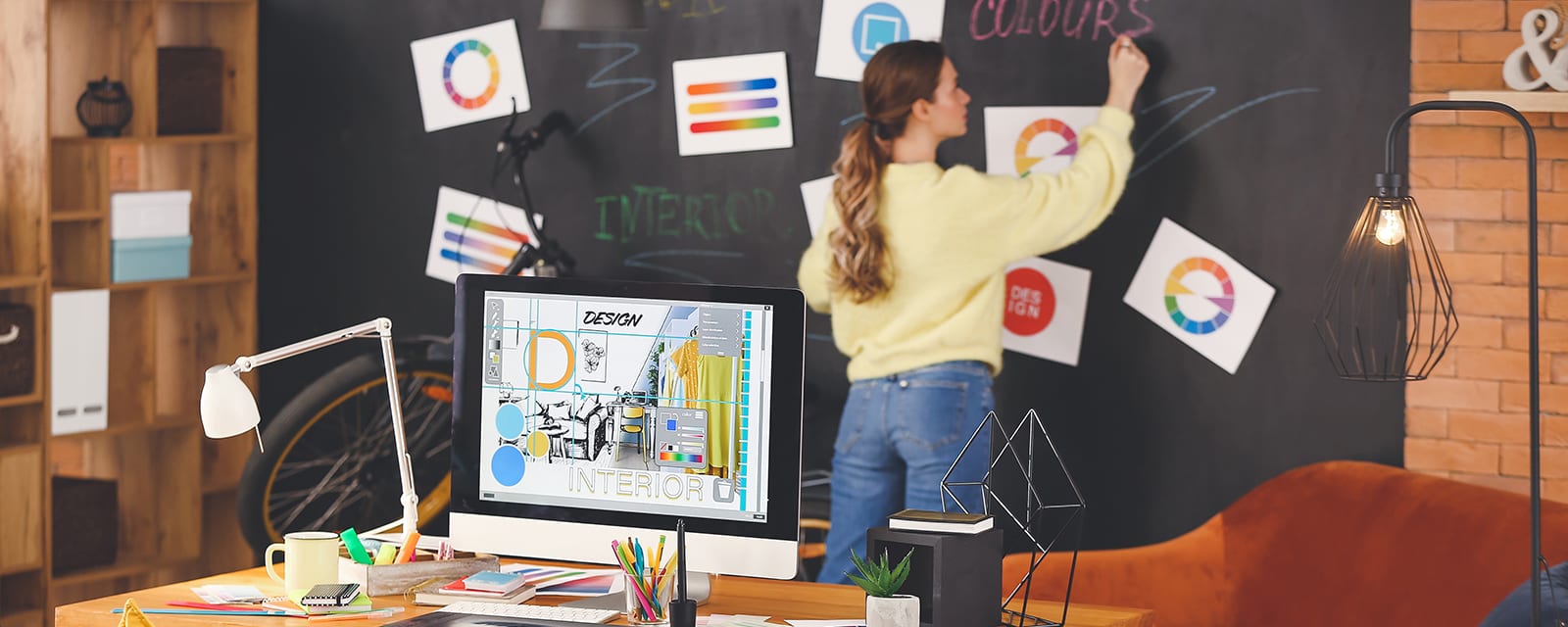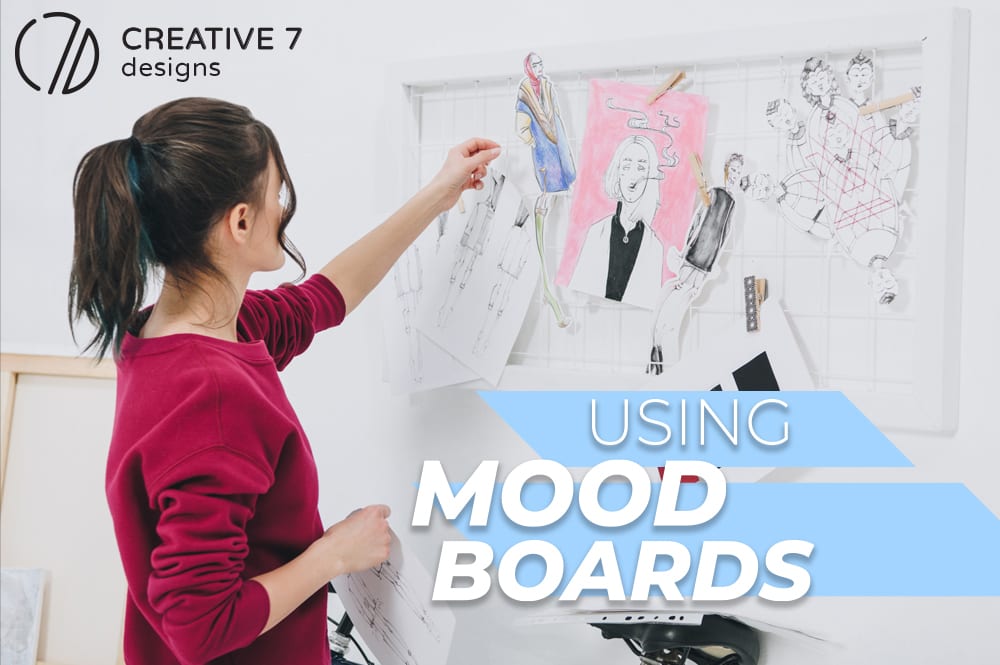From foam boards with spray glue and magazine clippings to digital boards, mood boards continue to be used for brand building to capture who and what a brand is.
Remember that time Oprah advised everyone to make a vision board (a.k.a mood board)? The goal was for people to create a visual representation of their dreams, goals, and aspirations — something that they could see every day. The old saying, “seeing is believing,” reigns true for this; having a visual representation of one’s goals is not only a reminder of what you want to achieve, but also a reminder that what you can achieve is often times right in front of you, in a literal sense. Essentially, our goals and ambitions aren’t as out of reach as we might think.
So, what’s the link between this mood board and your brand? Today, a “brand” could be an individual who shares a set of specific ideas online with people. While this might be a different idea of what a brand is in comparison to past years, we recognize that as the world evolves, so do terms and definitions. Technology and the increased use in social media are to thank for these changing terms (and the world’s obsession with “relating” to people online). And, there’s no denying that one of the best ways to reach an audience on a human level (ixnay on the chatbots for a bit) is by sharing parts of one’s self that would otherwise be considered intimate. After all, who isn’t interested in boosting their image through personalized communication? However, how do you establish what personalized communication looks like to you, for your audience?
With last year’s pandemic stripping away face-to-face interactions and replacing them with virtual goodness, the Creative 7 Design team had to reconsider what it meant to successfully “relate” to people amidst a pandemic. This is when the mood board comes in.
People enjoy having various moments shared with them through visuals, and mood boards help organize those moments into a tangible form of communication.
The reality is that people are still looking for something tangible that speaks to them on a personal level, and this is proving to be even more true when a pandemic forces everyone into a lockdown. Why do you think video blogs and IG stories are so popular? These mediums have always been relatively popular post-pandemic, but the pandemic has played a huge role in skyrocketing these platforms to near-necessary means of socializing and, as we know it, relating.
As a digital marketing agency, this year forced us to pay more than the usual attention to marketing that is equally attention-grabbing and modern as it is relevant to the new norm, and this translates to business owners, brand ambassadors, and marketers alike. We began to wonder if there was a missed opportunity we weren’t latching onto that other marketers in the pandemic could have grasped. How could we help our clients (your business partners) reach their target audience when everything was undergoing swift strictly-digital changes? (You know there’s an answer to these types of questions, right?) The reality is that implementing a mood board for projects, including brand-building, can help with the long term success.
This article summarizes a mood board as a collage or storyboard with a host of visual elements that all come together to represent a specific brand. These elements include:
- Typography and fonts
- Color palettes
- Photography/illustration styles
- Layout examples
- Headlines
- Applications across different mediums/channels

Developing and communicating your brand's authenticity to yourself, first, then your audience.
In one video we watched, a mood board was described as a “collection of inspiration that generally starts most design projects” in order to help a person decide on a creative direction. This collection includes words, associated colors or fonts, images that you want to draw inspiration from, and the like. With this in mind, it’s no surprise that our team was interested in this mood board trend. We’re aware it’s been a “thing” for some time now, but we wanted to pay more than the usual attention to it now that the pandemic has propelled many businesses into rethinking how they communicate. Considering the purpose of the mood board is to get you started on a project, it seems fitting to talk about this.
Mood boards are useful across various artistic platforms. In fact, photographers, graphic designers alongside interior and fashion designers, and creative agencies alike have utilized mood boards not just for internal projects, but brand-building for clients, too. And while there is often a temptation to jump right into the design phase of a project, we’re reminded that importance of taking the time to put together a mood board first because this can ultimately save time and effort, while ensuring that your campaign achieves its goals. Here’s how the mood board process works:
THE PROCESS
This blog post shows a step-by-step process for how to create a mood board for your client as an interior designer. Of course, these processes could be tweaked based on your creative medium, so be mindful that you have the freedom to customize these processes to you.
Step 1: Create a foundation for the mood board
You can always have a client fill out a questionnaire before you begin the project. Doing this will give you a foundation on where to begin. You can write down mood words, emotions, and key phrases that pop up when you envision. These words will give you an aesthetic to look for as you search images.
Step 2: Curate images that inspire you
Start curating images! This could be done by creating a board in Pinterest or searching for images on other platforms online such as Tumblr and Unsplash. Here are a few things I always keep in mind while searching for images.
Step 3: Create your mood board in Photoshop, Illustrator or Canva
When it’s time to take those images and create an actual mood board, keep in mind layout, color palette, and even sizing. You want to keep your board balanced and make sure to place an emphasis on key elements. For example, if the main color you want to highlight is a charcoal gray, make sure images with that color are larger in size. The same goes for patterns and shapes, sounds (yes, you could include music in your mood board), and words. Remember to only use images that fit and match the color scheme — your mood board should be 100 percent cohesive to your vision. Anything that could throw it off could essentially pose a challenge to your end goal. TIP: Use the eyedropper tool to pull color swatches from images to create a color palette.
Step 4: Finalize your mood board and use it as a reference frequently
If you’re using the mood board for brand building, it’s wise to get it approved by the client since it serves as a guide for both of you. This mood board is something you can reference to make sure both you and your client are on the same page.


